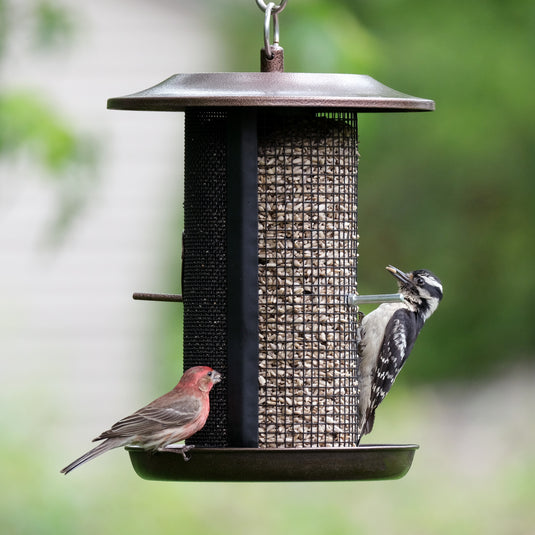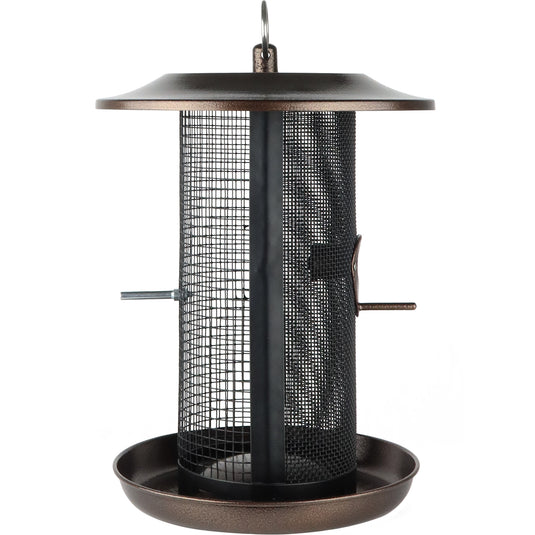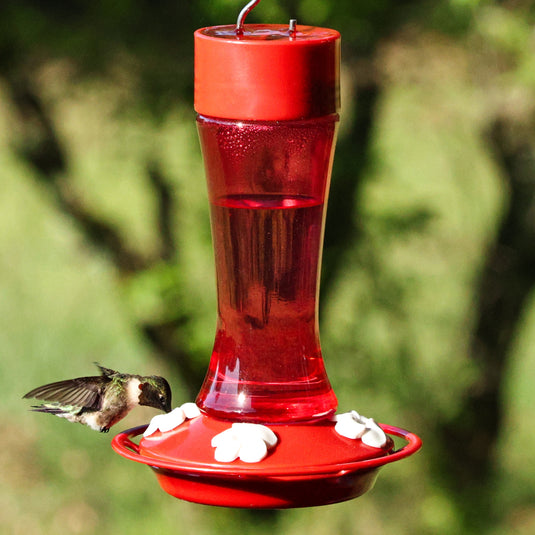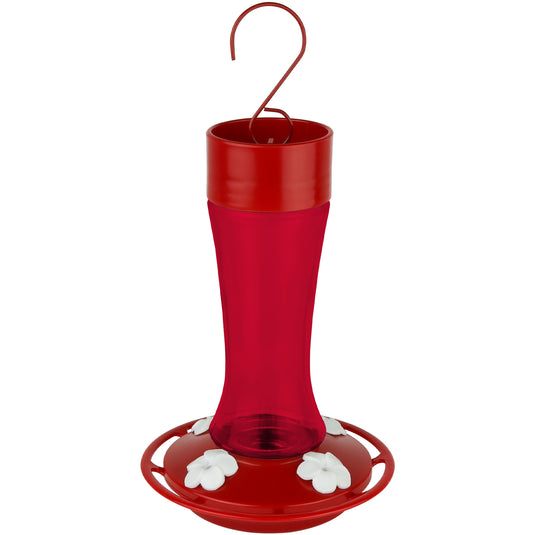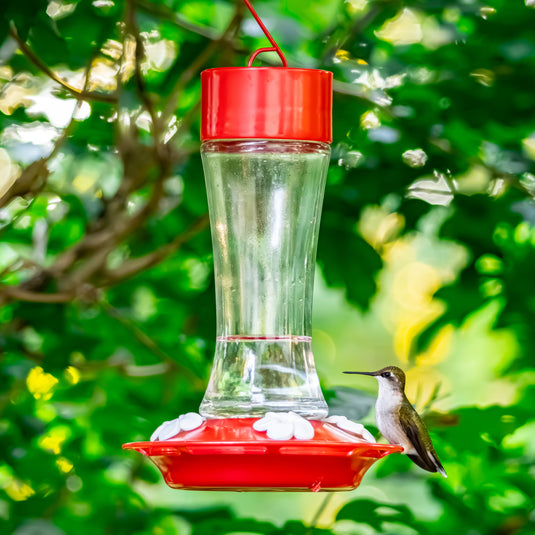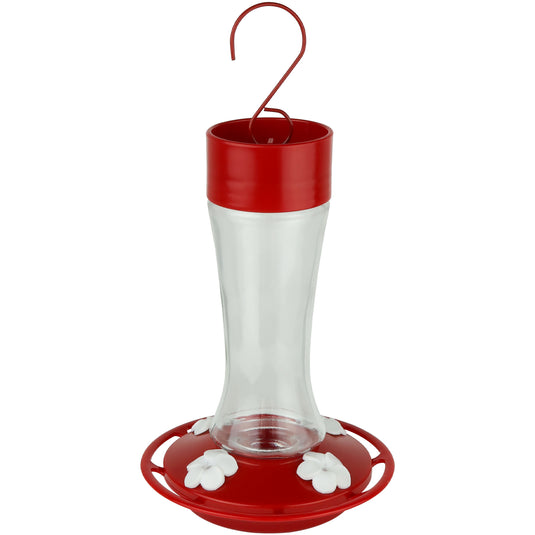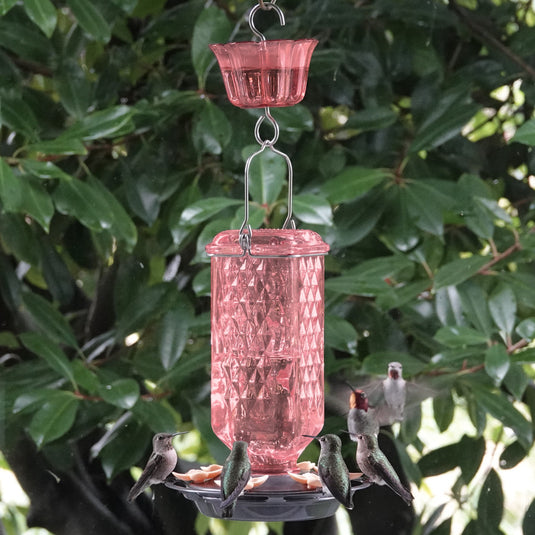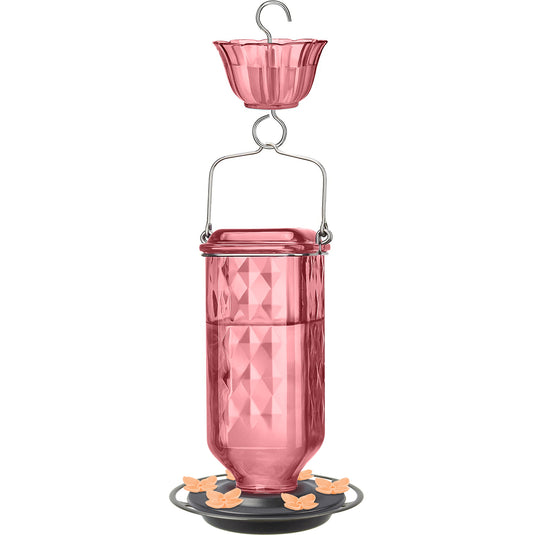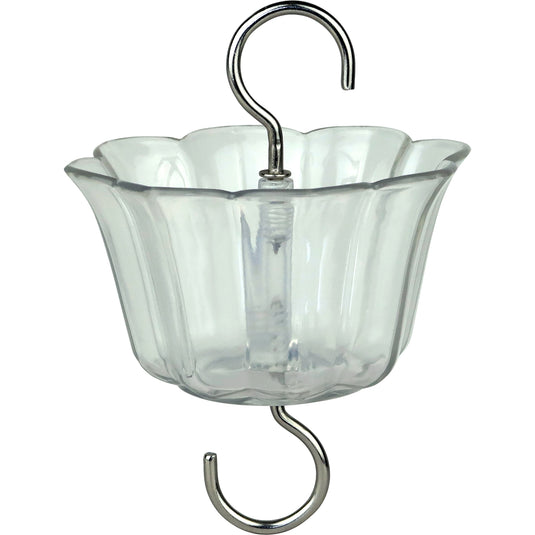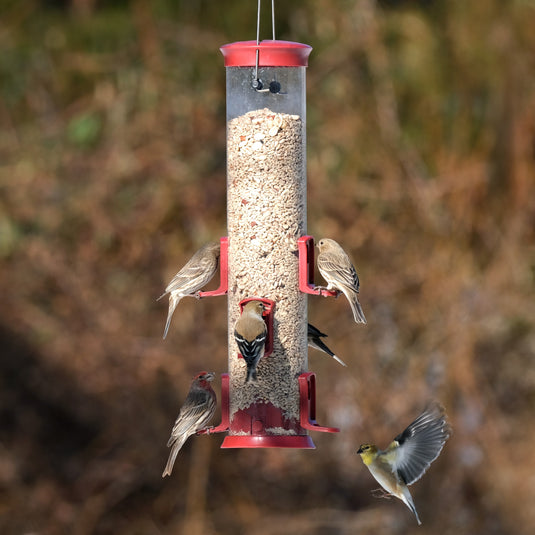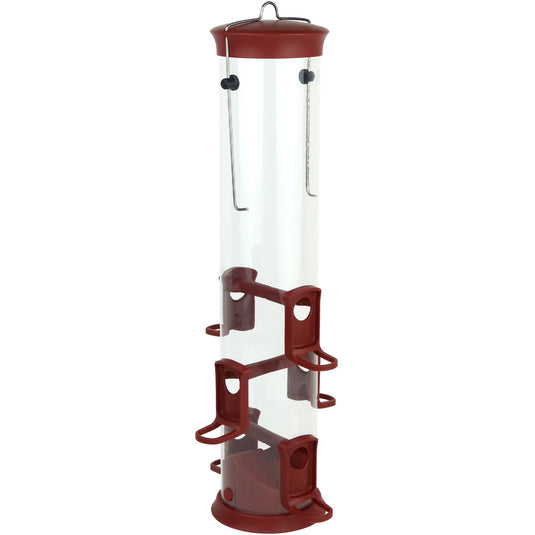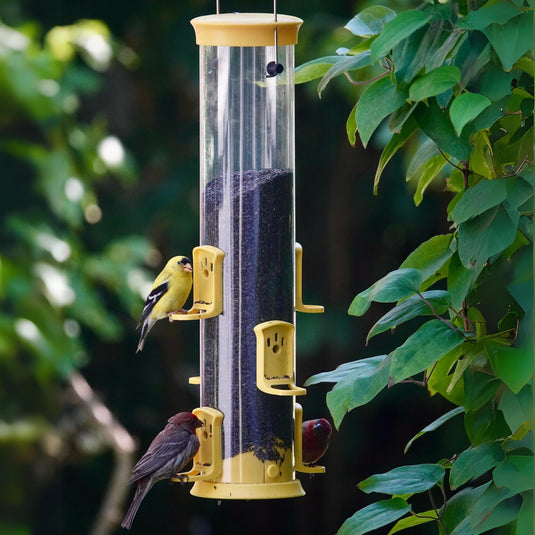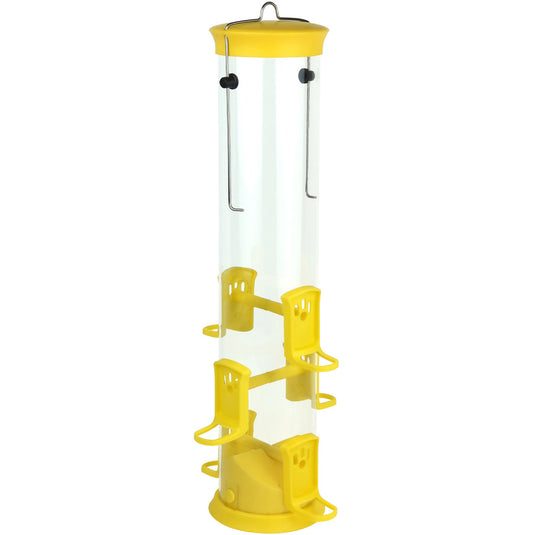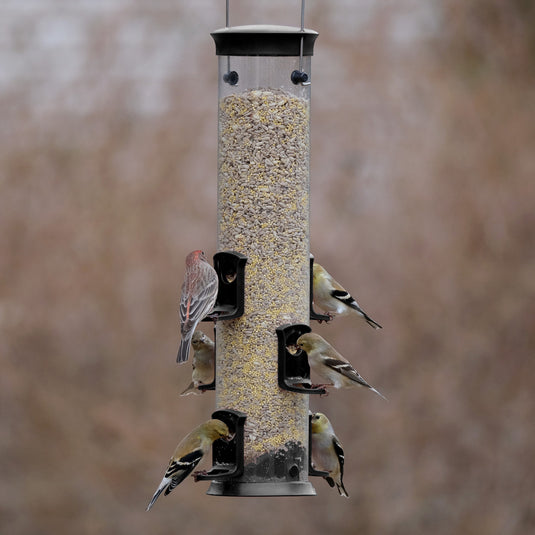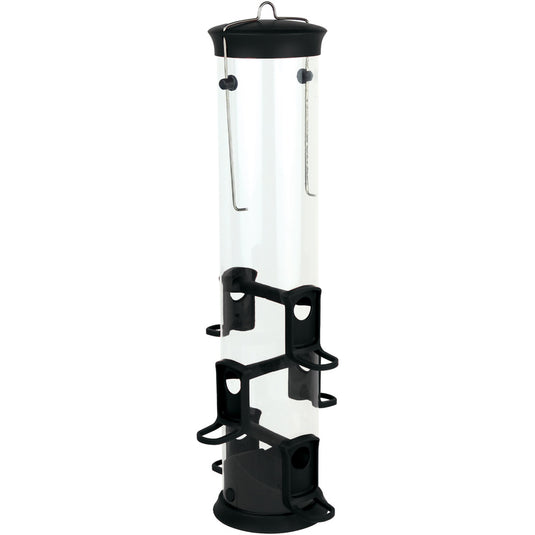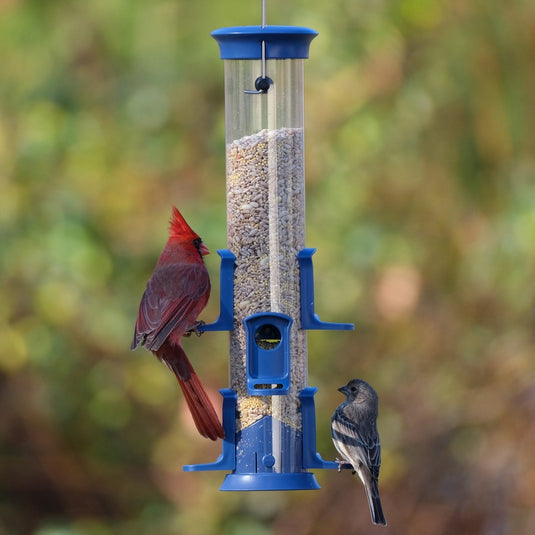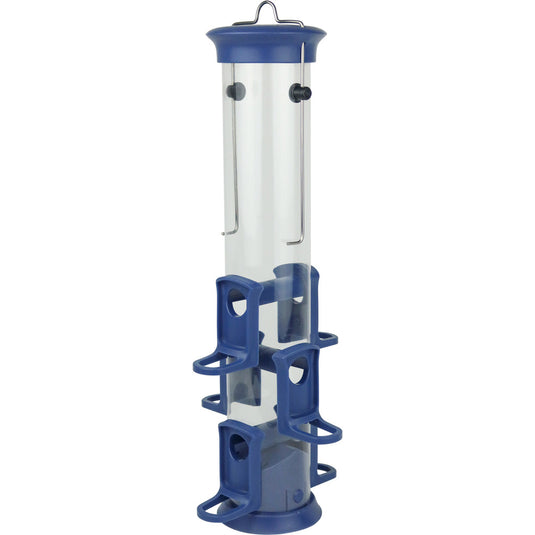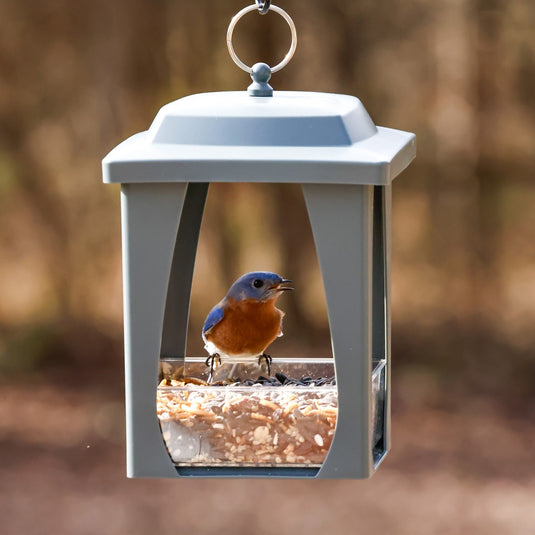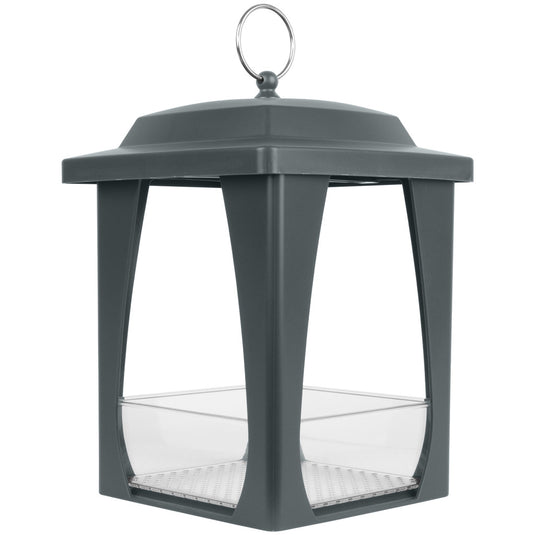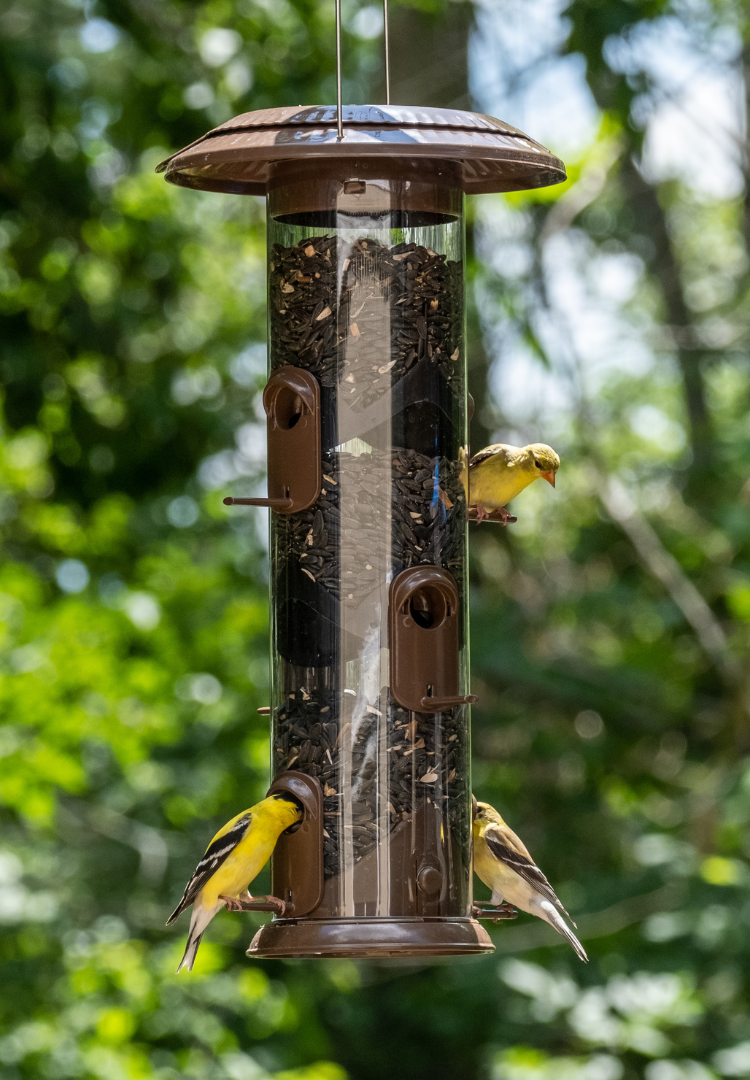As fall draws nearer, migratory birds will set out on their journey to find locations with better resources through the winter. With the right preparations, fall migration can be an exciting time to watch and learn about new birds passing through your backyard!

Blue Jays feeding from Hanging Platform Feeder
When is fall migration?
Fall migration for birds typically occurs between late August and early November, depending on the species and location.
Need to get more specific? Follow the local bird migration alerts from BirdCast to find out whether birds will be passing overhead near your city each night. BirdCast provides live and local bird migration alerts throughout the continental US by employing real-time analysis of bird migration traffic as detected by radar. You can also take a look at their bird migration forecast maps and live bird migration maps to see predicted and real-time intensities of actual nocturnal bird migration based on weather surveillance and historical bird movements.

Which birds migrate?
Each fall, billions of birds migrate across North America along four primary routes known as flyways: the Atlantic, Mississippi, Central, and Pacific Flyways. These pathways are not strictly defined, with many birds choosing different routes depending on the season or environmental conditions. Knowing which flyway you’re located in will give you a hint as to which species you might see traveling through your city this fall.

Here are the most common migratory bird species found in backyards in Canada and the United States:
- Ruby-throated Hummingbird
- Rufous Hummingbird
- Anna’s Hummingbird
- Allen’s Hummingbird
- Black-chinned Hummingbird
- Baltimore Oriole
- Hooded Oriole
- Orchard Oriole
- Bullock’s Oriole
- Rose-breasted Grosbeak
- Evening Grosbeak
- White-breasted Nuthatch
What is partial migration?
Many bird species exhibit partial migration, where some populations migrate while others remain in their breeding territories year-round. This unpredictable behavior is influenced by several factors:
- Food Availability: Birds may migrate based on the abundance of specific food sources like seeds and insects. When food is scarce, they head south to find more reliable supplies.
- Age and Experience: Younger birds are more likely to migrate than older ones that have established feeding territories.
- Weather: Birds often migrate to avoid harsh winters that make food sources inaccessible.
- Genetics: Some birds have a genetic predisposition to either migrate or stay put, creating variability within species.
- Irruptions: Migration numbers can vary year to year, often driven by food availability.
This irregular migration makes it a fascinating and complex subject for study. Here are some of the most common species that experience partial migration:
- House Finch
- American Goldfinch
- Purple Finch
- Blue Jay
- Dark-eyed Junco
- Northern Flicker
Best type of feed for fall migration
Fall migration takes a lot of a bird's energy, with some species traveling upwards of 3,000 miles! And when they stop for a snack, they need to replenish their energy quickly. Also keep in mind that birds will be passing through areas that they wouldn't usually frequent. This means that you might be getting a wide variety of visitors at your bird feeders in search of a meal. Here are the best feed types that we recommend for fall migration:
- Black oil sunflower: One of the most popular seed types amongst backyard birds is black oil sunflower seed. These large, thick seeds have a high-oil content and are loaded with protein, fiber, calcium, and more nutrient rich ingredients. The shell on black oil sunflower is thin, making it easy for most small-to-large seed eating birds to crack open and enjoy.
- Suet: Suet is made from the purest and hardest piece of fat found on an animal. Animal fat is a great quick source of heat and energy for many birds. Many birds that eat insects to round out their diets will eat when the insects they typically feed on are not plentiful.
- Homemade hummingbird nectar: Hummingbirds need to eat frequently - every 10 to 15 minutes - due to their incredibly high metabolism. The tried and true formula for hummingbird food is simple: about one part white granulated sugar to four parts water. This 20% sugar concentration best mirrors the sugar concentration naturally found in flowers preferred by hummingbirds. Higher concentrations of nectar can be used. Offering nectar with higher sugar concentrations in the late summer can help hummingbirds prepare for migration. (Don't go too overboard though! Studies show that hummingbird nectar concentration preference caps off at about 30% or about 3 parts water to 1 part sugar.)
- NOTE: We don't recommend a seed blend for fall migration. Birds know what they like. They will throw or shove unwanted seed onto the ground, making your bird feeding station into a mess that can spoil or attract pests. To reduce seed waste and mess, keep your feeding station clean and offer one seed type per bird feeder.
Need a new bird feeder this season? Take a look at our recommendations for the best bird feeders for fall.

How to prepare your bird feeding station for fall migration
- Have the right bird feeders out: When choosing which bird feeders to have out during fall migration, look for features like easy cleaning and filling, large capacity, the ability to attract multiple bird species, and resistance to pests. Take a look at our top picks for fall.
- Provide water: In addition to their daily search for food, migrating birds will also be on the lookout for fresh water. Provide a source of clean and fresh water from a bird bath, fountain or a shallow pond. It’s important to keep your water source clean and change the water often to prevent bacteria from forming and spreading amongst the birds. If your water source is stagnant, you can add a fountain to keep the water moving and prevent it from becoming dirty quickly.
- Keep it clean: While the birds travel to their winter destinations, they’ll be making stops along the way to refuel and rest. Since your feeders may be hosting more visits from travelers who are new to your backyard, it’s important to keep your bird feeders clean to avoid spreading diseases among birds. During fall migration, increase the frequency of your feeder cleanings to keep your backyard flocks healthy.
When should I put away my hummingbird feeder?
If you live in an area with migrating hummingbirds, continue to keep your hummingbird feeders stocked with homemade nectar for about two weeks after your see your last hummingbirds. This will ensure that you’re able to feed any latecomers on their way south.

Anna’s Hummingbirds feeding from Crimson Carnation Antique Glass Gravity Hummingbird Feeder
Identify your new feathered friends!
Since you’ll be seeing some new faces around your feeders, get ready to identify them with these recommended resources:
- Nature’s Way common backyard birds list: Whether you’re a beginning birder or a seasoned expert, identifying the birds who visit your backyard can sometimes be a challenge. This quick guide-at-a-glance can help you identify the most common backyard birds. Then, take a deep dive into each one to learn more about their distinctive features, how to attract them, how they nest, and more!
- Merlin Bird ID app: Answer three simple questions about a bird you are trying to identify and Merlin will give you a list of possible matches. Merlin offers quick identification help for all levels of bird watchers to help you learn about the birds across the Americas, Europe, Asia, Africa, and Oceania.
- National Geographic Field Guide: This fully revised edition of the best-selling North American bird field guide is the most up-to-date guide on the market. Perfect for beginning to advanced birders, it is the only book organized to match the latest American Ornithological Society taxonomy.
- State-specific field guides: Author, naturalist and wildlife photographer Stan Tekiela is the originator of the popular state-specific field guide series and many easy-to-use identification guides for the U.S.


